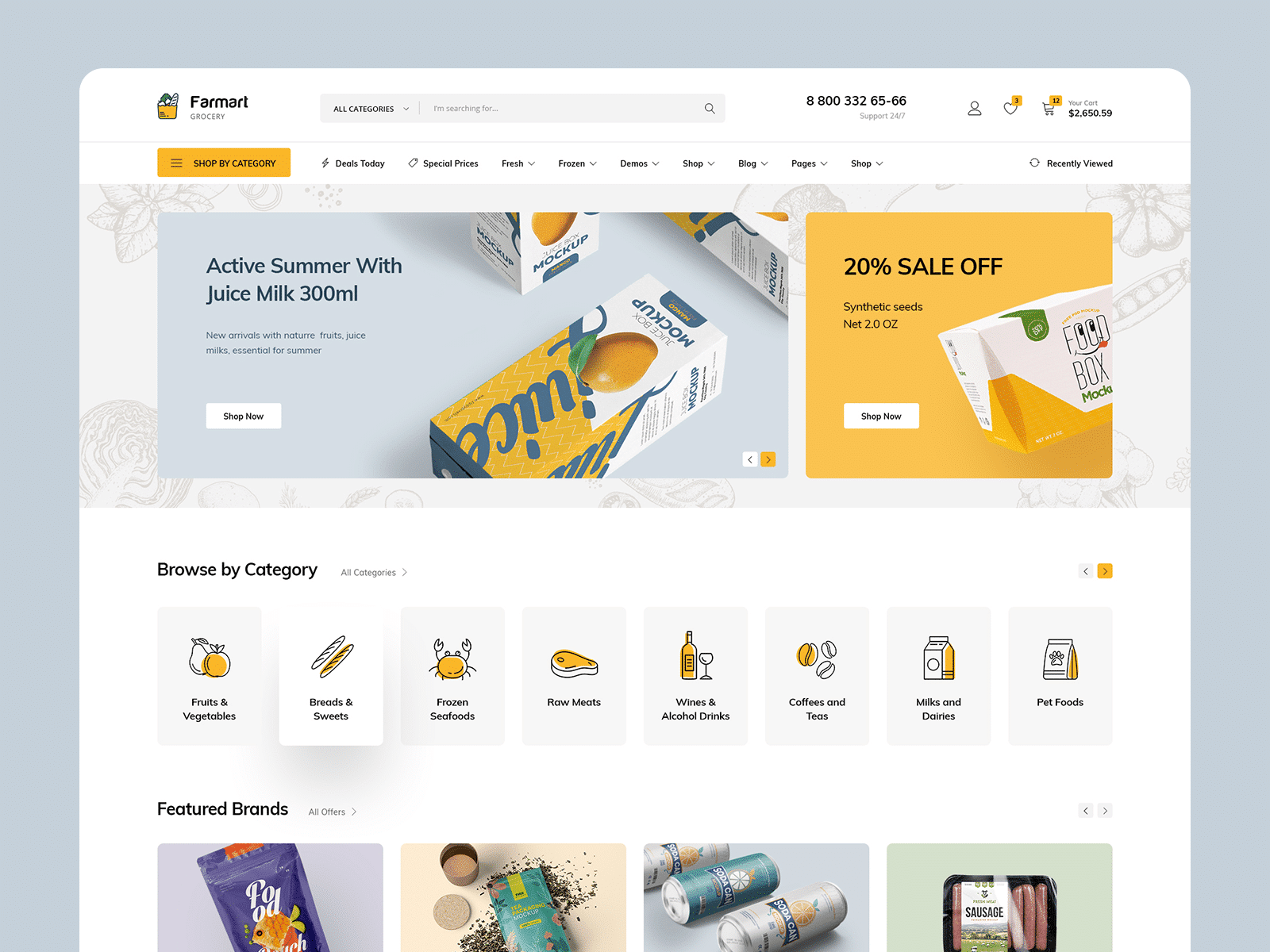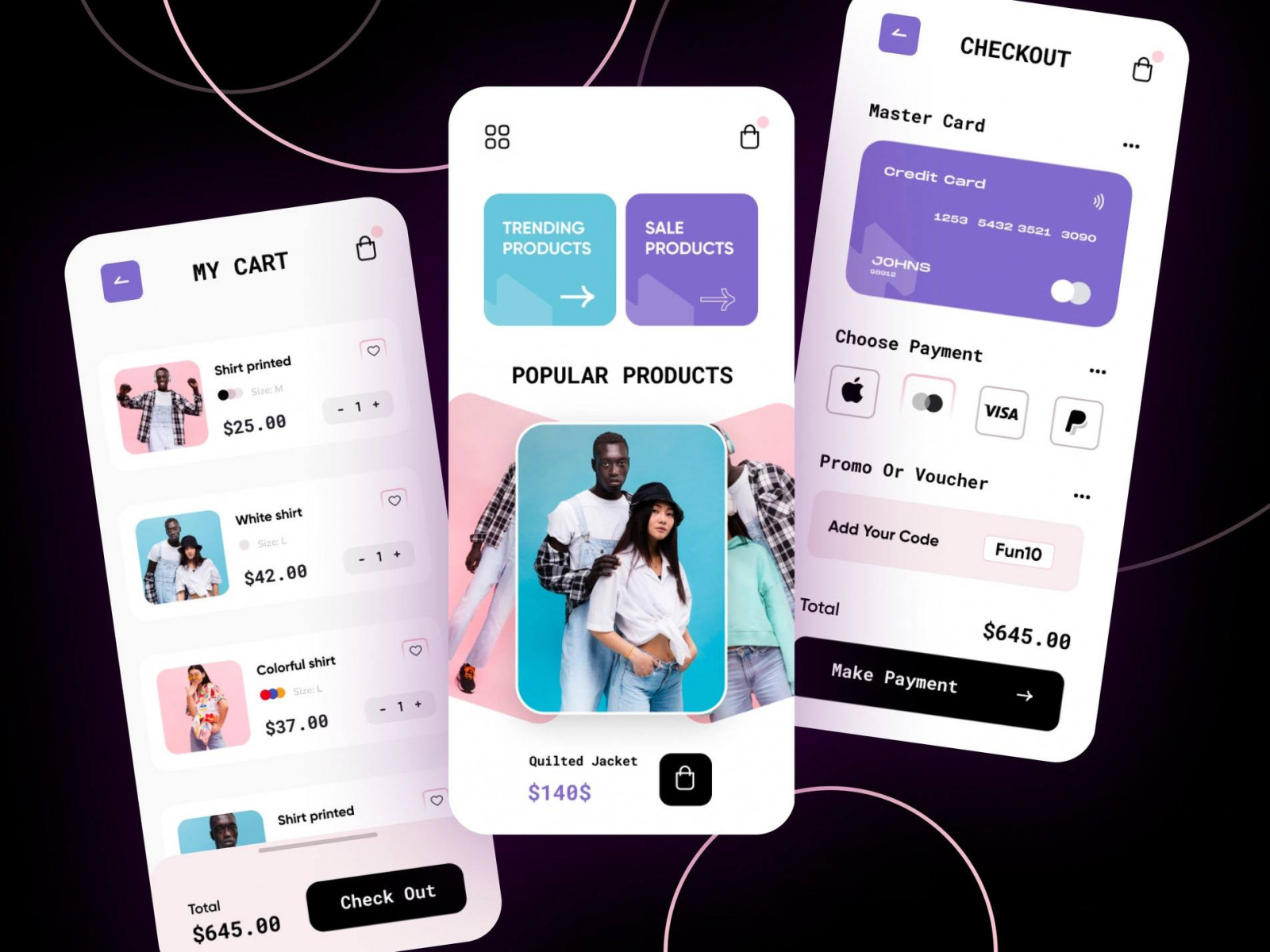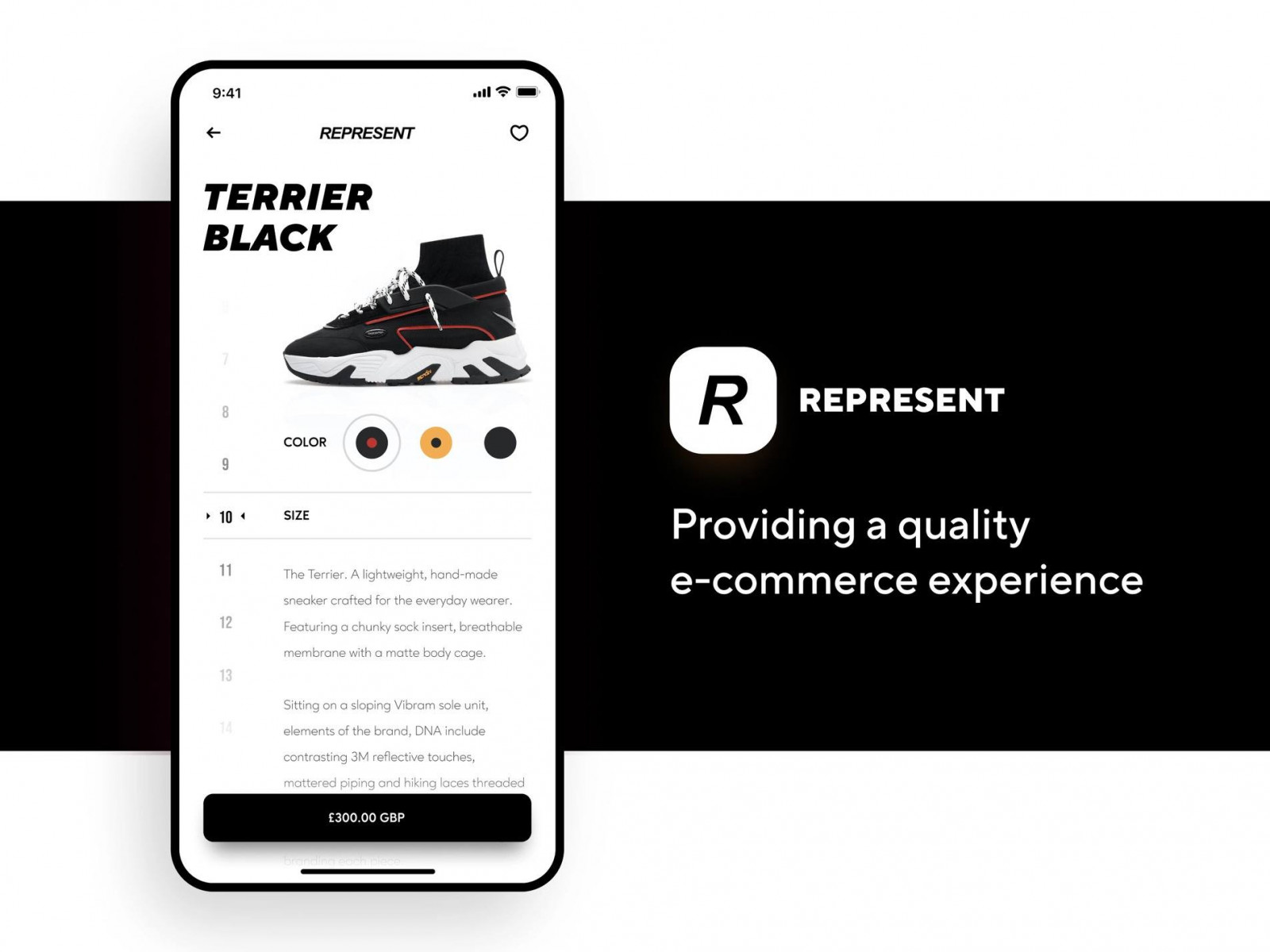Due to technological advancements, virtually anyone can start a successful online business with little to no resources. The rise of internet culture has opened up a plethora of opportunities for all types of entrepreneurs. Whether you’re a creative soul, a showman, or a savvy strategist, finding a way to make money online might be easier than you think.
Contents:
To make the best decision, you should be aware of all the advantages and pitfalls of each marketplace business model, as well as which revenue model each marketplace titan employs and why.
Why start an online marketplace business
According to recent statistics, one-third of all businesses in the United States “flow through e-commerce”, 63% of which are marketplaces. The culture of online shopping is spreading because these platforms allow customers to buy from multiple third parties on a single platform, benefit from a much broader selection of goods and services than pure e-commerce websites, and quickly compare product characteristics and prices from different manufacturers or sellers.

NFT marketplace app animation concept by Conceptzilla
What benefits do marketplaces provide to their owners and investors? Here are numerous reasons why you should stick with this business model:
Online marketplace owners do not own any of the products sold by vendors on their marketplaces.
Yes, that’s right! It really rests on the shoulders of third parties instead. Some of the world’s leading digital marketplaces, such as Amazon, do, however, offer additional shipping and inventory services. In any case, an online marketplace owner’s primary goal is to provide merchants with a touch point and a relevant audience in exchange for a fee. In other words, they serve as intermediaries between sellers and buyers. There are numerous monetization models to choose from.
Digital marketplaces are a lucrative market for investors.
The COVID pandemic accelerated the growth of e-commerce, particularly online marketplaces. According to the Dealroom report, their combined value globally in December 2021 was $7.2 trillion. It is a 36% increase over the December 2020 report. Both giant and unicorn platforms are experiencing dynamic growth. As more consumers shop through online marketplaces, the chances of stakeholders receiving an attractive return on their investment are increasing exponentially.
The marketplace model applies to all industries.
It is compatible with a wide range of e-commerce business models (B2B, B2C, C2C), as well as their combinations (B2, B2C) and monetization models. Furthermore, depending on your niche and business needs, you can choose between a vertical marketplace aimed at a single market sector (Uber, Airbnb, Upwork) and a horizontal one that offers a diverse range of products or services under one roof (Aliexpress, eBay). With such a wide range of options, you can begin with a single-niche platform and then expand to multiple product categories, or vice versa – launch a horizontal marketplace, test your ideas, and find a best-selling niche.
Easy analysis
Marketplace owners can use accurate metrics to track their sales. An owner, for example, can see which products and services are in high demand and which vendors are the most preferred. As a result, the owner is able to promote goods and services that are truly important to its users.
A scalable business model
Since investment in inventory is unnecessary, a marketplace requires less financial risk than an e-commerce store. However, such platforms are likely to grow rapidly. If traffic increases quickly, more vendors may be required to meet the demand. The only challenge that a marketplace owner faces is balancing supply and demand. Customers prefer high-quality vendors, and vendors prefer growing customer bases.
Value proposition
Thanks to marketplaces, businesses now have a fantastic way to manage their supply that does not require any initial investment in a physical store. Suppliers can create a sort of business card that includes ratings and customer reviews so that customers can make informed decisions. A platform can offer lower fees, higher earning potential, a better user experience, a more appealing brand, and a safer app environment to attract both product and service providers as well as customers.

Organic & grocery marketplace redesign by Logan Cee
Top marketplace business ideas for your startup
Most online marketplaces use one of six different online business models which are:
- Commission revenue
- Membership/subscription fee
- Freemium
- Featured listings and ads
- Lead fee
- Listing fee
- Mixed
Let’s take a closer look to find the one that suits you the best.
Commission revenue
Statistics show that among the most successful platforms, 51% of them thrive by taking a percentage from the transactions they process, which makes commission revenue the most common model for modern marketplaces. When a customer pays a provider, the platform handles the transaction and either charges a percentage or a flat fee.
The most significant advantage of this marketplace business model is that providers are not charged anything until they receive some value from the platform. This is very appealing to providers. At the same time, from the standpoint of the marketplace, this commission is usually the most lucrative: you receive a percentage of all the value that passes through your platform. Commissions are the primary source of revenue for the most well-known platforms, including Airbnb, Etsy, eBay, Fiverr, TaskRabbit, and Uber.
The biggest challenge in making commissions work is providing enough value for both the customer and the provider. If your platform does not provide enough value to your users, they will find a way to circumvent your payment system, and you will not be paid. The most difficult challenge in making commissions work is providing enough value for both the customer and the provider. If your platform does not provide enough value to your users, they will find a way to circumvent your payment system, and you will not make your profit.
Subscription or membership fee
A membership fee (also known as a subscription fee) is a marketplace business model in which some or all users are charged a recurring fee to get access. The typical value proposition for providers with this revenue strategy is that the web platform assists them in finding new customers.
Home-swapping sites, such as Love Home Swap, Home Exchange, and dating sites are common examples of consumer-to-consumer (C2C) marketplaces with membership fees (OkCupid, Match.com). These sites frequently vet all subscribers to ensure quality matches and to create a sense of exclusivity that justifies the fee.
Membership is common in recruiting in the B2C market. LinkedIn and StackOverflow, for example, charge companies a subscription fee to gain access to their talent pools. Studiotime, an “Airbnb for recording studios,” is another example of a niche where membership fees are the primary business model. When it comes to B2C businesses, the platform is usually free for customers but requires a paid subscription for providers.
The membership fee model has the disadvantage of aggravating the “chicken and egg problem” — how to find providers without customers and customers without providers. You must have a sufficient number of users on your platform to make it valuable to both providers and customers, and requiring a payment discourages users from signing up. To get around this, offer steep discounts to early adopters or even waive the fee entirely to build the initial user base.

E-commerce – Mobile app by Anastasia Golovko
Freemium
How do you monetize a marketplace where people freely share low-value items? Peerby, a Dutch startup, has created a C2C platform where people can borrow things from each other for free. The platform’s basic experience is free for all users. Peerby has made the decision to monetize by providing premium services. They have two main offerings: insurance (the provider can request that the customer pay an insurance fee that guarantees the item will be replaced if it is damaged or stolen while receiving the item for free) and delivery (the customer can pay a small fee to get the item delivered to their door instead of having to go pick it up from the provider).
The logic behind the freemium model is that the core offering is free, but once users are hooked, paid value-adding features are offered. The challenge is that these paid services must provide enough value to entice a significant portion of your users. If only 1% of your users are interested in your premium offering and the rest of your users use your site for free, it is unlikely to be a sustainable revenue stream.
It can be difficult to create a premium service that is appealing to a large enough audience. As a result, many platforms use premium services as additional revenue streams. Mascus, for example, provides premium web page services to its customers to supplement its listing fee-based marketplace business model.
Featured listings and ads
Providers can purchase featured listings to increase the visibility of their offerings. Although listing on the site is usually free, providers can pay to have their listing featured on the site’s homepage or at the top of a specific category. Gumtree, the most popular classified ads website in the United Kingdom, is one example. One of Etsy’s premium services is featured listings.
As a marketplace business model, featured listings and ads are similar to pure advertising in that you show ads to your users, such as Google AdSense. Both featured listings and ads are popular revenue sources for classified ad websites. They are frequently found on real estate platforms, such as Zillow, or free sharing platforms like Freecycle.
The problem with these models is that, once again, they require a large number of users to generate meaningful revenue. When you’re selling eyeballs, your revenue per user is likely to be much lower than if you can extract value from your transaction process.

Wine e-commerce mobile app by Taras Migulko
Lead fee
Lead fees fall somewhere in the middle of the listing fee and commissions. Customers post requests on the site in a typical lead fee model, and providers pay to bid on these customers. Lead fees provide a better value proposition than listing fees because you only pay when you are contacted by a potential customer.
Lead fees are only effective if the lead is valuable. As a result, it is unusual in C2C markets. B2C or B2B services are common applications, where each new lead can result in a long-term customer relationship with multiple deals. Thumbtack is a recent high-performing example of this model. It is a B2C marketplace for all types of local professional services ranging from plumbers to guitar teachers.
However, while Thumbtack has done well with lead fees thus far, the provider’s problem is that they no longer use the platform with existing customers—rather, they build the relationship outside the platform once they have the lead. This is why Thumbtack decided to create professional invoicing, payment, and scheduling tools. In the future, they may shift to a commission model in order to extract more value from the transactions they facilitate.
Listing fee
When providers post new listings, some platforms charge a fee. When the potential value per listing is high, this marketplace business model is typically used.
Craigslist is perhaps the most well-known example in this category. It is a network of local websites where people can post classified ads for anything they want, such as selling goods, services, jobs, finding an apartment, dating, or anything else.
The issue with listing fees is that they do not guarantee value for providers, so they cannot be too high. As a result, the platform can only capture a small portion of the value flowing through the site. A sustainable business model based solely on listing fees necessitates a large number of listings. Furthermore, because paying a listing fee does not guarantee that the item will be sold, the marketplace will have a more difficult time demonstrating that it provides actual value to its providers.
Mixed
The major players in the e-commerce business community successfully combine multiple models and revenue streams. Marketplace revenue models are used as a primary source of income. Some are added on top of the main one. It is normal for your platform to have multiple monetization channels. Simply select the two that best suit your market.
Using multiple business models on the same site can be beneficial at times. Etsy, for example, is a B2C marketplace that accepts commissions but also charges a fee to post new listings. Etsy generates revenue from both popular and not-so-popular items by using both commission and listing fees. However, In cases where providers do not want a continuous subscription and only want to sell specific items, a listing fee is preferable to a membership fee.

Represent Clo e-commerce app concept by Conceptzilla
How to choose the best marketplace model
Many different revenue strategies are used in modern marketplaces. In general, “owning the transaction” and charging a commission on all purchases made through the site is the best revenue model for most. This strategy is highly scalable and frequently profitable.
However, commissions do not always make sense, so alternative models are required. Trying out different business models to see which one works best for your concept is a good idea. To avoid being distracted, you should only use one revenue stream at a time in the beginning. When your platform expands, it may make sense to combine several revenue streams to account for everything that happens on your site.
Are you in need of an experienced team for complex development? Contact us to create a well-designed platforms that will attract customers.
